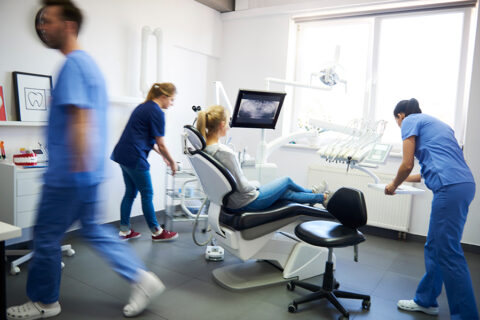Dental emergencies can strike unexpectedly, causing significant pain and discomfort. Knowing how to respond swiftly and effectively can prevent further damage and ensure quicker recovery. Here’s a comprehensive guide on emergency dental care, outlining common scenarios and immediate actions to take.
Understanding Dental Emergencies
Dental emergencies encompass a range of issues from severe toothaches and broken teeth to dislodged fillings and abscesses. Recognizing the signs and symptoms is crucial for determining the severity and appropriate response.
Toothaches: Severe tooth pain can stem from various causes such as decay, infection, or trauma. Persistent pain warrants an immediate visit to the dentist. In the meantime, rinsing the mouth with warm water, flossing to remove trapped debris, and applying a cold compress can alleviate discomfort.
Chipped or Broken Teeth: Accidents can result in chipped or broken teeth. If a piece of the tooth breaks off, rinse the mouth with warm water and save the fragments if possible. Apply gauze to any bleeding area and use a cold compress to reduce swelling. Visiting the dentist promptly is essential to prevent infection and further damage.
Knocked-Out Teeth: A knocked-out tooth is a severe emergency. Retrieve the tooth by the crown (the part visible in the mouth) and avoid touching the root. Rinse it gently without scrubbing and try to reinsert it into the socket if possible. If not, store it in milk or a saline solution and seek immediate dental care. Time is critical for successful reimplantation.
Lost Fillings or Crowns: Losing a filling or crown can be painful and increase tooth sensitivity. While waiting for dental care, protect the exposed area by placing a piece of sugarless gum or dental cement (available at pharmacies) over the cavity. Avoiding hard or sticky foods can also prevent further damage.
Abscesses: Dental abscesses are infections around the root of a tooth or in the space between the teeth and gums. They can cause severe pain, swelling, and fever. An abscess requires urgent dental attention to prevent the infection from spreading. Rinsing the mouth with a mild saltwater solution can help alleviate some discomfort.
Preventive Measures and Preparedness
While some dental emergencies are unavoidable, preventive care and preparedness can minimize risks and improve outcomes. Regular dental check-ups, good oral hygiene practices, and using protective gear during sports can significantly reduce the likelihood of emergencies.
Routine Dental Check-Ups: Regular visits to the dentist help identify potential issues before they escalate into emergencies. Professional cleanings, examinations, and X-rays ensure that your teeth and gums remain healthy.
Oral Hygiene: Maintaining a consistent oral hygiene routine, including brushing twice a day, flossing daily, and using mouthwash, can prevent decay and gum disease. Healthy teeth and gums are less prone to emergencies.
Protective Gear: Wearing mouthguards during sports and physical activities can protect teeth from trauma. Custom-fitted mouthguards offer the best protection against impacts that could cause fractures or dislodgement.
When to Seek Professional Help
Recognizing when to seek professional help is crucial in Emergency Dental Clinic. Persistent pain, visible damage, or signs of infection like swelling and fever indicate the need for immediate dental care. Delaying treatment can lead to complications, prolonged pain, and more extensive dental procedures.






Comments